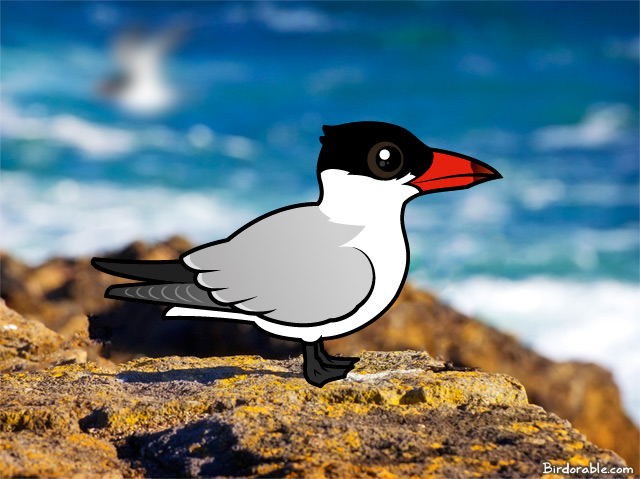Ten Facts About the Caspian Tern

Here are ten interesting facts about the Caspian Tern:
- The Caspian Tern is the world's largest tern species.
- The Caspian Tern's diet consists almost entirely of fish.
- Unlike many other tern species, the Caspian Tern retains its black cap during the winter (non-breeding plumage).
- The Caspian Tern occurs on all continents except Antarctica.
- Caspian Terns are highly vocal. Chicks vocalize while they are still in the egg!
- Caspian Terns are fastidious when it comes to feeding their young. Adults rinse their bills after feeding their babies. If an offered fish is accidentally dropped on the ground, the adult will rinse it off with water before re-offering it to the baby tern.
- Caspian Terns nest along the Gulf Coast and thus are one of the species directly threatened by the BP Oil Spill Disaster of 2010.
- Starting from day one, chicks are fed whole fish, which they swallow headfirst.
- The oldest known wild Caspian Tern lived to be 26 years old.
- The Caspian Tern is one of our cute Birdorable birds! The Caspian Tern was added to Birdorable on July 20, 2007.









Comments
Leave a comment
Thank you!